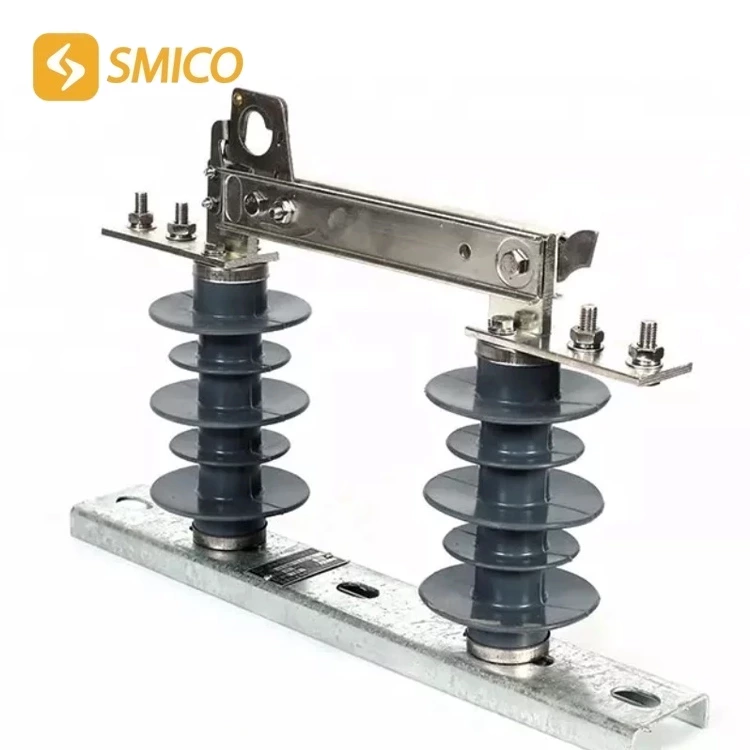Mechanism Problems Of High Voltage Isolating Switch
Mechanism problems manifest as refusal to operate or inadequate opening and closing, which often occur during the switching operation. In many cases, the fault will not expand, and temporary maintenance and treatment can be carried out on site, which will of course delay the power outage time. Most of the problems are caused by old GW4 and GW7 switches, and GW6high voltage isolator has had automatic opening failures after closing (mainly due to poor balance spring material and process, and even rust and break of balance spring during operation); GW10 and GW11 products have had the angle adjustment of the three-phase arm of the knife incorrect, the angle adjustment of the output shaft flange of the mechanism not in place, the fan-shaped gear teeth burst, resulting in the connection screws of the universal joint flange and the mechanism flange being cut off, the limit switch cast iron parts of the mechanism being broken, and the opening and closing of the switch not in place.
high voltage isolator switch is relatively normal when it leaves the factory or is just put into production after installation. But not long after, some will have various problems after one or two years. Some of them cannot be turned during operation due to water ingress, some of them will cause the connecting rod to bend during operation, and even the rotating porcelain bottle and the sliding line shaft have been twisted into a twist, and some of them will break at the connecting rod welding and cannot be operated. In short, various faults will be caused by the problem of mechanism jamming.
Operation failure is first of all a mechanical transmission problem. The mechanism box used in the early days is prone to water ingress, condensation and moisture. The waterproof performance of the rotating bearing is poor, and it is impossible to add lubricating oil. If it is not operated for a long time, the mechanism will be jammed, the bearing will rust, and forced operation will often cause damage and deformation of the components. In addition, the unreasonable design of the product's transmission structure and the large operating resistance are also important reasons. The closing limit of the conductive rod of some products is not properly matched with the motor, causing the turbine to crack during operation. The transmission main shaft of the knife mechanism of some GW4 type hv isolator is connected to the vertical transmission shaft, and a semi-cylindrical matching structure is adopted. During electric operation, relative displacement occurs due to the deformation of the semi-cylinder, so that the closing and opening of the gate cannot be in place. There are also cases where the shaft pin is broken due to the rust of the grounding knife and it cannot be operated. In addition, there are auxiliary switch problems, including inadequate switching or poor contact of contacts, which lead to electric operation failure. Such problems should be carefully analyzed and tested during the design and manufacturing stage, and each switch should be responsibly tested before leaving the factory. Defects must not be left at the operation site.
The phenomenon of water ingress into the hv isolator switch mechanism box and the bearing parts is very common. The rust problem of metal parts is also very serious, including the housing, connecting rod, shaft pin, spring, etc. It has been found that the rain cover on the intermediate mechanism box of some GW6 switches will rust to the point that it cannot be touched. The operating mechanism box housing will also be seriously rusted. In addition, improper lubrication measures will lead to mechanical transmission failure and poor contact of the conductive contact system. Improvement measures such as using stainless steel materials for the mechanism box, using dry lubrication technology for the contact system, and fully sealing and waterproofing the rotating parts to achieve lifelong maintenance-free.
Fault prevention
The causes of the above-mentioned high voltage electrical isolator defects or failures include manufacturing process and material quality problems, and some are caused by improper inspection and maintenance. To ensure the operation of isolator high voltage, ensuring its initial quality is the key.

